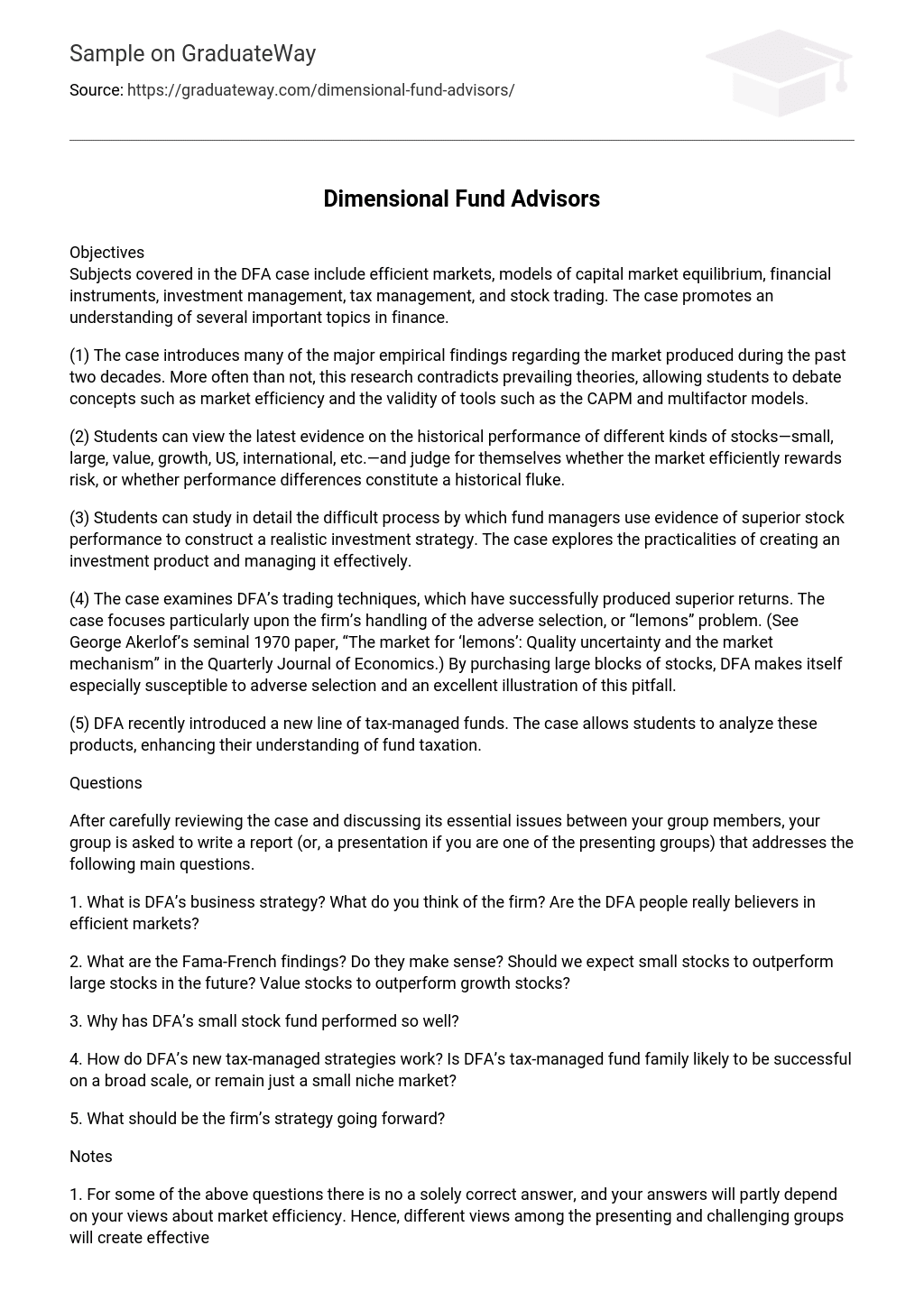Objectives
Subjects covered in the DFA case include efficient markets, models of capital market equilibrium, financial instruments, investment management, tax management, and stock trading. The case promotes an understanding of several important topics in finance.
(1) The case introduces many of the major empirical findings regarding the market produced during the past two decades. More often than not, this research contradicts prevailing theories, allowing students to debate concepts such as market efficiency and the validity of tools such as the CAPM and multifactor models.
(2) Students can view the latest evidence on the historical performance of different kinds of stocks—small, large, value, growth, US, international, etc.—and judge for themselves whether the market efficiently rewards risk, or whether performance differences constitute a historical fluke.
(3) Students can study in detail the difficult process by which fund managers use evidence of superior stock performance to construct a realistic investment strategy. The case explores the practicalities of creating an investment product and managing it effectively.
(4) The case examines DFA’s trading techniques, which have successfully produced superior returns. The case focuses particularly upon the firm’s handling of the adverse selection, or “lemons” problem. (See George Akerlof’s seminal 1970 paper, “The market for ‘lemons’: Quality uncertainty and the market mechanism” in the Quarterly Journal of Economics.) By purchasing large blocks of stocks, DFA makes itself especially susceptible to adverse selection and an excellent illustration of this pitfall.
(5) DFA recently introduced a new line of tax-managed funds. The case allows students to analyze these products, enhancing their understanding of fund taxation.
Questions
After carefully reviewing the case and discussing its essential issues between your group members, your group is asked to write a report (or, a presentation if you are one of the presenting groups) that addresses the following main questions.
1. What is DFA’s business strategy? What do you think of the firm? Are the DFA people really believers in efficient markets?
2. What are the Fama-French findings? Do they make sense? Should we expect small stocks to outperform large stocks in the future? Value stocks to outperform growth stocks?
3. Why has DFA’s small stock fund performed so well?
4. How do DFA’s new tax-managed strategies work? Is DFA’s tax-managed fund family likely to be successful on a broad scale, or remain just a small niche market?
5. What should be the firm’s strategy going forward?
Notes
1. For some of the above questions there is no a solely correct answer, and your answers will partly depend on your views about market efficiency. Hence, different views among the presenting and challenging groups will create effective debates during the class presentations.
2. Do not try to write a report simply answering each of the above questions like what you do in a project assignment. Instead, this is a case study and it requires your group to submit a coherent review and discussion on the topics covered in the case.
Format Requirement
1. Your report should be typed double-spacing.
2. The length of the report should be about 5-10 pages (but there will be no penalty for submitting a report longer than 10 pages.)
3. Your report should have a cover page that includes a title and all group members’ names.
4. Your report should have an Introduction section and a Conclusion section.
5. For other general writing suggestions, refer to the writing tips posted on course website.
6. Your grade on the report depends on how thorough and clear your analysis is.





